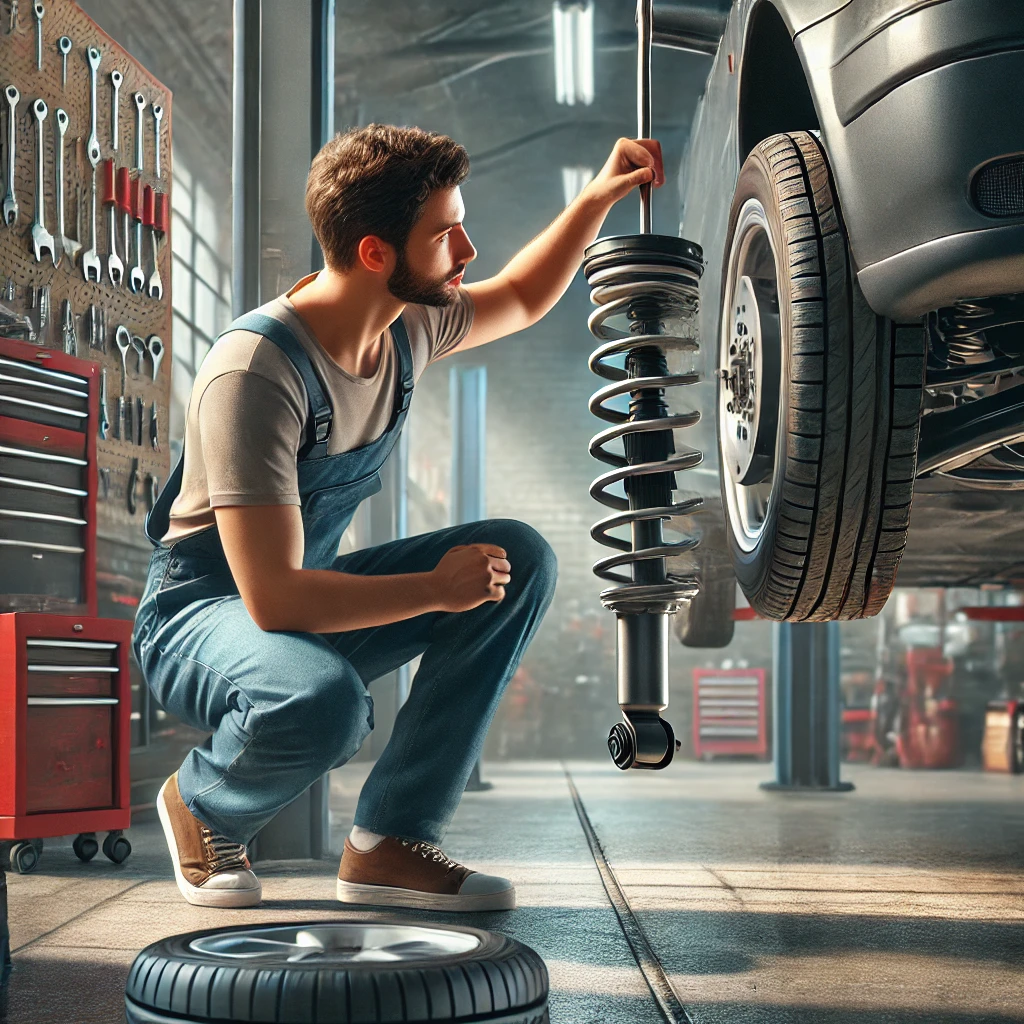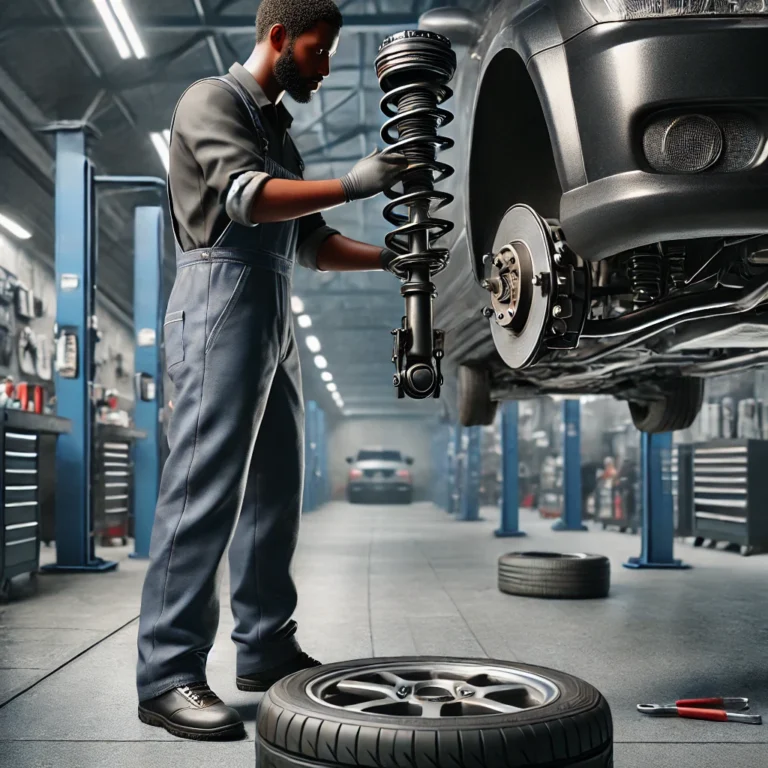Worn-out shocks, also known as shock absorbers, can greatly affect your car’s handling, comfort, and safety. Shocks play a crucial role in absorbing impacts from the road, keeping the vehicle stable, and ensuring smooth rides. Recognizing the signs of worn-out shocks can help you avoid potential safety issues and improve your driving experience.
Signs of Worn-Out Shocks
- Bouncy or Rough Ride
One of the most common symptoms of worn shocks is a bouncy or rough ride. If your car continues to bounce excessively after hitting a bump, the shocks may be worn. Shock absorbers are designed to dampen road impacts, so increased bounce means they’re no longer absorbing impacts effectively. - Longer Stopping Distances
Worn shocks can increase stopping distances by up to 20%, according to safety studies. When shocks are ineffective, the car can lose traction, especially during sudden stops, making it harder to control. - Excessive Nose Diving or Rear Squatting
If your car’s front end dives down when you brake, or the rear squats back when accelerating, this could be due to failing shocks. The vehicle should stay level when you brake or accelerate, so these signs indicate that the shocks may not be controlling the weight transfer properly. - Uneven Tire Wear
Worn-out shocks can cause your tires to wear unevenly, usually in the form of “cupping” or scalloped edges. Without adequate shock absorption, tires don’t stay firmly on the road, leading to irregular wear patterns. - Leaking Fluid
Shocks contain hydraulic fluid that helps absorb impacts. If you notice fluid leaking from the shocks, it means the seals are broken, and the shock’s ability to dampen is compromised. Look under the vehicle around the shock absorber area for signs of oil or fluid leaks. - Vehicle Swerves or Drifts
Worn shocks can make your vehicle swerve or drift, especially when turning or in windy conditions. With failing shocks, the vehicle’s tires may not stay adequately connected to the road, reducing stability and increasing the risk of loss of control.
Importance of Replacing Worn Shocks
Replacing worn shocks is essential for maintaining control, reducing wear on other suspension components, and ensuring passenger safety. Driving with worn shocks can cause additional wear on other parts, like tires and the suspension system, potentially leading to higher repair costs over time. Most experts recommend inspecting shocks every 50,000 miles or according to your vehicle’s maintenance schedule.


